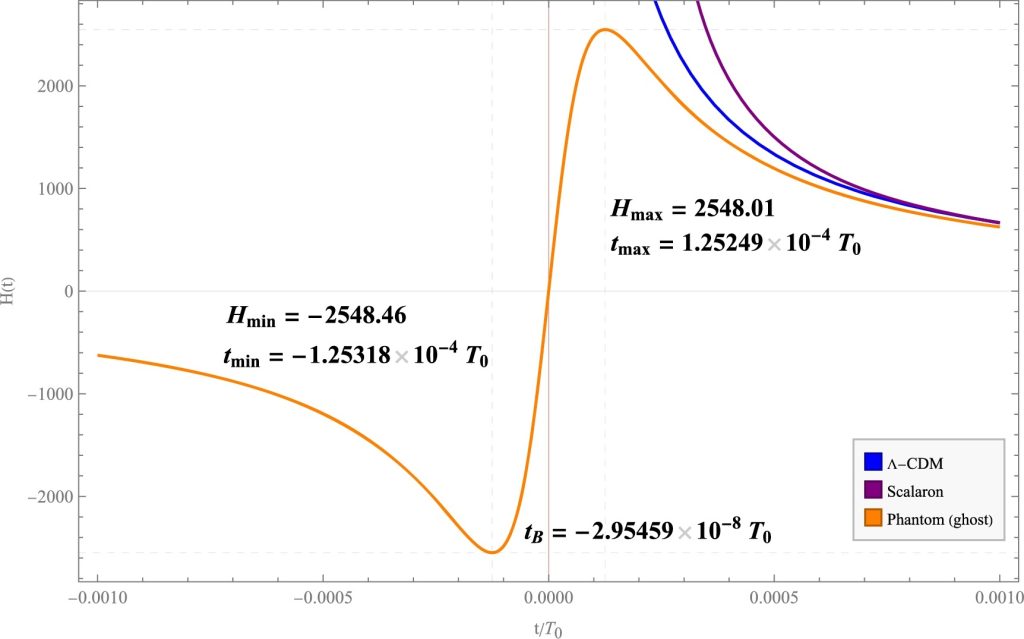An innovative approach to separating baryonic and dark matter in the Λ-CDM model
A team of researchers from the University of Wrocław, including prof. Andrzej Borowiec and a PhD student Marcin Postolak, published the results of their research on the possibility of separating baryonic and dark matter within the standard Λ-CDM model [1] in the prestigious journal Physics Letters B.
The subject of the study was a theoretical account of non-minimal scalar field coupling to matter in Friedman-Lemaître-Robertson-Walker (FLRW) cosmology. The authors broadened the classic approach by applying the generating function, which made it possible to formulate and solve dynamic equations describing the failure to preserve the energy momentum tensor in the presence of the chameleon mechanism.
In particular, the study enabled:
- Deriving explicit expressions for energy density and pressure in the case of non-minimal scalar field coupling to any kind of matter/energy. This makes it possible to model realistic cosmological scenarios, including imitating dark matter and energy;
- An analysis of energy conditions, in which it was shown that in certain situations (from a mathematical point of view) the energy density can take on negative values, which may be a trace of effects related to the (as yet unknown) theory of quantum gravity.

In addition, the shielding (chameleon) mechanism allowed the ratio between baryonic and dark matter to be achieved in agreement with current observational data. The designated dark to baryonic matter ratio of approximately 1:5 is consistent with the Planck mission results, confirming the potential capability of the proposed formalism to reproduce the present-day structure of the Universe.
The work also demonstrated that the non-minimal coupling of the “phantom”-type scalar field makes it possible to describe cosmology with a bounce phase (the so-called matter bounce), in which the contraction phase of the Universe passes into the expansion phase. This scenario eliminates the problem of initial singularity present in the standard model of the Big Bang. Numerical results indicate that introducing the bounce does not disturb the subsequent compliance of the model with cosmological observations.

It is worth to mention that the classic inflation scenario, while effective in explaining the spatial flatness and homogeneity of the Universe, struggles with significant problems, such as [2]:
• Fine tuning of free parameters for inflaton potential, requiring arbitrary assumptions;
• Unclear nature and origin of inflaton (none of the fields known in physics seem to meet the conditions set for inflaton), the existence of which still remains a hypothesis;
• The trans-Planckian problem – the potential inflation had to have taken place in the time interval very close to the Planck era in which the laws of physics (classic and quantum) known to us seem to have no application..
The model with the bounce phase presented in the paper provides a potential alternative, eliminating the necessity to introduce inflaton and the initial singularity. However, models of this type face challenges, such as stability of dynamics of the early Universe, the problem of entropy, or compliance with the cosmological perturbations theory.
The formalism presented in the article opens new research possibilities, including further testing of the chameleon mechanism and generating functions. Particularly important is conducting an analysis of cosmological perturbations that would enable a precise verification of models in the context of observational data.
The full text of the article was published under open access (link below).
References:
[1] A. Borowiec, M. Postolak, Is it possible to separate baryonic from dark matter within the Λ-CDM formalism?, Phys. Lett. B 860, 139176 (2025).
[2] M. Postolak, Did the Big Bang and cosmic inflation really happen? (A tale of alternative cosmological models), arXiv:2404.18503, 4 2024, CosmoVerse website.
